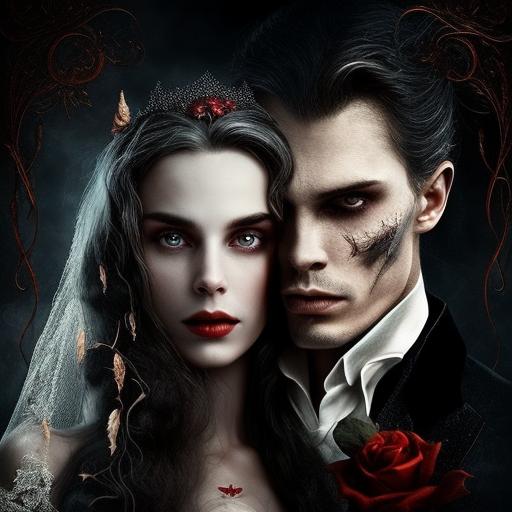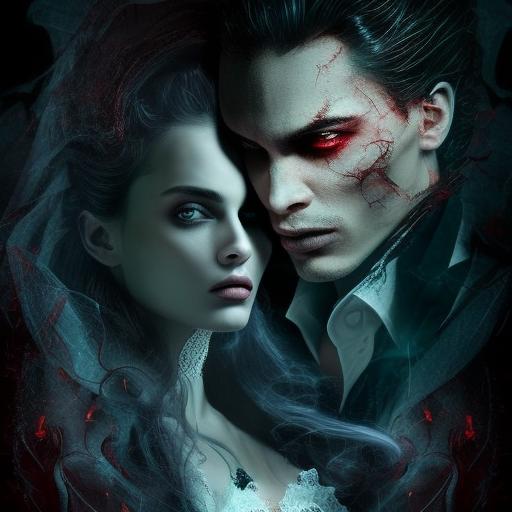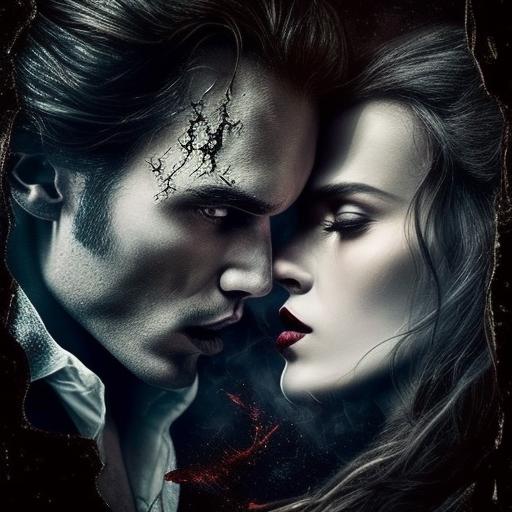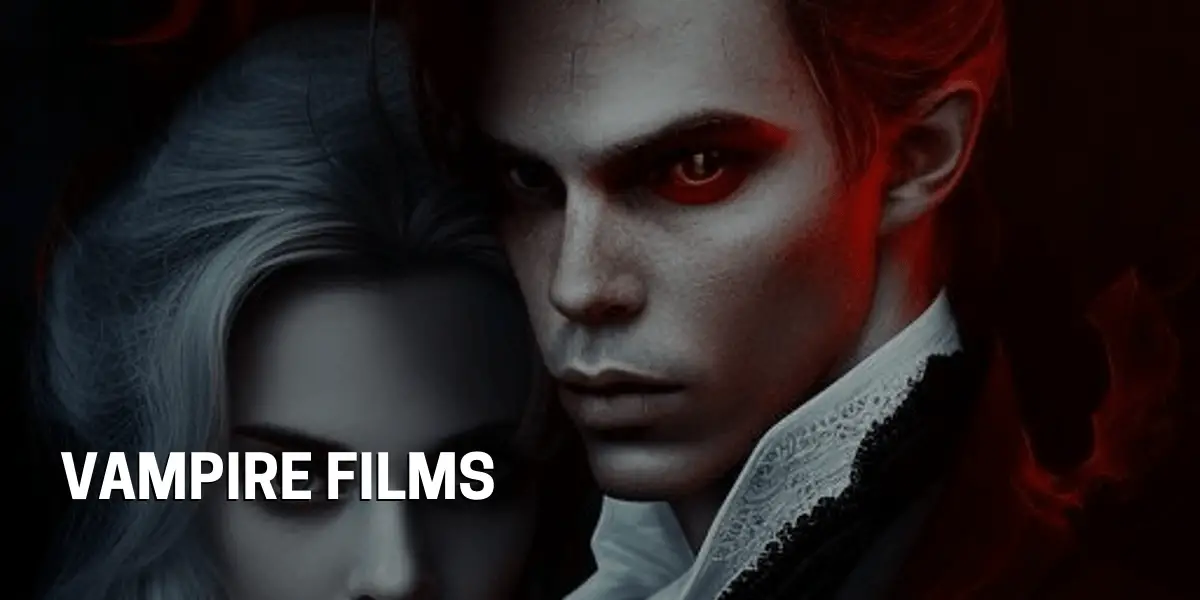Understanding Vampire Movies
Vampires have long captivated the imaginations of filmmakers and audiences alike. Recently, there has been an increased interest in understanding the different subgenres of vampire films and the various themes and motifs common in them. This blog post will explore the different subgenres of vampire movies and examine the impact of vampire movies on popular culture and society.
To start, let’s look at the different subgenres of vampire movies. It’s important to note that there is no single, agreed upon definition of what constitutes a vampire movie. Some scholars argue that the term encompasses any movie that features a supernatural creature that feeds on the blood of the living, while others insist that it only applies to movies about the undead, immortal creatures of Eastern European folklore.
Horror vampire movies are the most traditional and popular of the genre. These films typically feature a seemingly unstoppable vampire antagonist who must be vanquished by a brave hero or heroine. These movies often portray vampires as evil, supernatural forces.
Romantic vampire movies often focus on the relationship between the vampire and a human protagonist. These movies often feature a tragic love story between the vampire and the human, as the vampire is unable to fully reciprocate the human’s love due to their supernatural nature.
Finally, comedy vampire movies often feature vampires as comedic protagonists. These movies often portray vampires as clumsy, bumbling characters who find themselves in comedic situations.
Vampire movies have had a profound impact on popular culture and society. They have been used to explore themes of love, death, and immortality, and to comment on social issues such as racism and xenophobia. Vampire movies have also shaped the way we think about vampires, with the stereotype of the suave, well-dressed vampire becoming a popular image in popular culture.
In conclusion, vampire movies have come a long way since the first vampire movie, Nosferatu. Today, there are a variety of subgenres of vampire movies, each with their own unique themes and motifs. Furthermore, vampire movies have had a lasting impact on popular culture and society.

History
One of the most popular subgenres of vampire films is horror. In these films, vampires often take on the role of an unstoppable antagonist, and it is up to a brave hero or heroine to save the day. Examples of classic horror vampire films include Bram Stoker’s Dracula (1992) and Blade (1998).
Romantic vampire movies often focus on the relationship between vampires and humans. These movies often tell a tragic love story between a vampire and a human, as the vampire is unable to fully reciprocate the human’s love due to their supernatural nature. Examples of romantic vampire movies include Interview with the Vampire (1994) and Let the Right One In (2008).
Comedy vampire movies, on the other hand, often feature vampires as comedic protagonists. These movies often portray vampires as clumsy and bumbling characters who find themselves in humorous situations. Popular examples of comedy vampire movies include Love at First Bite (1979) and Shaun of the Dead (2004).
Vampire movies have had a lasting impact on popular culture and society. They have been used to explore themes of love, death, and immortality, and to comment on social issues such as racism and xenophobia.
Common Themes
We often think of vampire movies as being dark and foreboding, but they can be so much more. From horror to romance to comedy, vampire movies explore a variety of themes and motifs.
One of the most common themes is the idea of the undead, which is often used to symbolize the idea of living beyond death, either through literal immortality or the continuation of a legacy. The struggle between good and evil is another common theme, with vampires representing the dark and mysterious forces of evil.
Blood is often used as a symbol of power in vampire movies, as vampires have the ability to steal life force through their bite and use it to their own advantage, which can also be a metaphor for the power of addiction.
Genres
A world of terror, fantasy, and suspense await viewers of Vampire Motion Picture Productions. With a variety of stories to choose from, the production company offers viewers the chance to explore different aspects of the vampire experience. From modern-day stories to period pieces set in different eras of vampire lore, the options are endless. Adaptations of existing books, comics, and other forms of media are also available. Horror, fantasy, thriller, and suspense are all part of the Vampire Motion Picture Productions experience. It is the perfect destination for vampire movie fans.Horror
In the world of horror movies, vampires have been a staple presence for decades. They bring a certain atmosphere of dread and tension, as viewers can never be sure when a menacing creature will appear.
But they also bring a level of suspense and excitement, with their unpredictable actions and motivations leaving viewers on the edge of their seats.
Whether it’s a modern-day story or a period piece, vampires provide a unique and thrilling experience that horror fans can’t get enough of.
And with Vampire Motion Picture Productions, fans can explore a variety of stories that feature these iconic creatures.

Romantic Comedy
Why are vampire movies so popular? It could be the promise of immortality, the thrill of danger, or the promise of a forbidden romance. Whatever the reason, vampire movies have become a staple of the horror genre, and the past decade has seen a resurgence in popularity of the classic tropes.
Romantic comedy vampire movies have become increasingly popular, with protagonists often immortal and having had centuries to perfect their relationships. This genre also explores the complexities of human/vampire relationships which can create a unique dynamic. At the core of these movies is a love story between two characters, often one human and one vampire, who must overcome various obstacles to find their happily ever after.
In addition to the romantic elements, vampire movies often feature other genres such as action and adventure. These elements further add to the excitement and suspense, as viewers get to experience the heart-pounding action of a vampire hunt. The mysterious adventure of exploring the unknown also keeps viewers hooked.
Adventure
It is no surprise that vampire films have become a mainstay in the horror genre. From thrilling action scenes to the exploration of unknown lands, these films offer a unique blend of horror, suspense, and adventure.
Protagonists often embark on daring journeys to save themselves, their loved ones, or the world. Adventure is a prevalent theme in many vampire films, capturing the imagination of viewers as they explore the complexities of human/vampire relationships.
The thrill of the chase and the excitement of the forbidden are all part of the experience. With so many elements combined, vampire movies remain a popular form of entertainment.
Popular Movies
When it comes to vampiric cinema, there is no shortage of classic films that have become popular around the world. Bram Stoker’s Dracula, Nosferatu, and The Lost Boys are just a few examples. These films have become an integral part of popular culture, with references to them appearing in television, books, and other forms of media.
The psychological implications of vampirism are also explored in these films, often highlighting the desire for immortality and power. The fear of death and mortality is also explored in these films, with some being hailed as modern classics.
Vampiric cinema can captivate viewers around the world with its complex stories and nuanced exploration of themes.
Bram Stoker’s Dracula
The novel has had a lasting impact on the modern vampire genre, creating iconic vampire tropes that are still used today. Garlic and crucifixes are used to ward off vampires, and an invitation is required in order for a vampire to enter a home.
The idea of vampires being destroyed by sunlight is also a concept that originates from the novel. The psychological implications of vampirism are also explored in the novel and its film adaptations.
The desire for immortality and power, as well as the fear of death and mortality, are recurring themes throughout the story. In spite of its age, the story remains popular today and has become an integral part of popular culture, with references to it appearing in television, books, and other forms of media.

Twilight
Twilight has become a cultural phenomenon, captivating viewers around the world with its romantic and thrilling narrative. Stephenie Meyer‘s novel was adapted into a five-film series, following the story of Bella Swan, a teenage girl who falls in love with a vampire, Edward Cullen.
The series was extremely successful, grossing over $3.3 billion worldwide and becoming one of the highest-grossing film series of all time. It has also gained a large following among teens, with many fans attending midnight screenings of the films and dressing up as their favorite characters.
The films explore the psychological implications of vampirism, including the desire for immortality and power, as well as the fear of death and mortality. In spite of its age, the story remains popular today and has become an integral part of popular culture, inspiring references in television, books, and other forms of media.
What We Do in the Shadows
How What We Do in the Shadows stands out from the classic vampire genre is an interesting question. The mockumentary-style horror comedy follows the struggles of Viago, Deacon, and Vladislav, three vampires who have been roommates for hundreds of years, as they attempt to navigate the modern world. This unique take on the vampire genre is a hilarious and heartfelt look at the struggles of being an immortal creature in a quickly changing world. With an all-star cast, including Jemaine Clement, Taika Waititi, and Rhys Darby, What We Do in the Shadows is a must-see for any vampire movie fan. The film dives deep into the psychological implications of vampirism, exploring concepts such as the desire for immortality and power, as well as the fear of death and mortality. What We Do in the Shadows successfully captures the complexity of the vampire genre and is sure to be loved by fans of the classic vampire films.
Impacts
Each new paragraph should be in a <p></p> tag.
This blog post will explore the impact of vampire films on popular culture, art, technology, and culture. From inspiring books to pushing the boundaries of special effects, vampire films have had a tremendous impact on society.
The first vampire film was released almost a century ago. Yet vampires remain a popular topic in popular culture today.
Vampire films have had a profound influence on the art world, inspiring a wide variety of illustrations, paintings, and sculptures. Technology has also advanced thanks to the vampire genre, with more immersive and realistic experiences available.
Vampire films have been popular since the first film was released and remain so today, with new films being released regularly.
Social
It is clear that vampires have had a lasting impact on popular culture, art, technology, and culture. Vampires have been a source of fascination and horror throughout history. The vampire film genre has sought to explore the social implications of immortality, power, and the human condition.
Themes of isolation and alienation are often explored in vampire films, as vampires are portrayed as outsiders in society. There is a fear of the unknown that is evoked by exploring the mysterious nature of these creatures.
More recently, vampires have been humanized by exploring their relationships with humans and their motivations for their actions.
Cultural
For centuries, vampire movies have captivated audiences with their captivating stories, themes, and characters. Why? It’s likely because vampire movies often reflect the fears and anxieties of society at the time of their release. These movies tap into the dark themes of mortality, human frailty, and forbidden love, which often resonate with viewers. It’s not just fear that draws people to vampire movies though. The enduring popularity of vampire movies reflects the human fascination with the supernatural and the unknown – a curiosity that is universal and timeless.
The mysterious and often dangerous world of vampires draws in viewers, who are eager to explore its depths. This exploration of the unknown creates a captivating and thrilling experience for viewers, one that keeps them coming back for more. The economic impact of vampire movies can’t be understated either – these movies have been incredibly successful, bringing in huge profits for the studios that produce them.
Economic
In recent years, vampire films have become an ever-popular genre in the movie industry. These films have achieved great success at the box office, making them a profitable venture for the studios that produce them. Not only do they bring in large sums of money, they also have a lasting impact on popular culture. From fashion to literature and music, vampire films have influenced many aspects of human life.
But why are these films so successful? The answer lies in their captivating stories, themes, and characters. Vampire films often reflect the fears and anxieties of society at the time of their release, delving into dark themes such as mortality and forbidden love.
Vampire films also tap into the human fascination with the supernatural and the unknown, creating a thrilling and captivating experience for viewers. With such a winning combination, it’s no surprise that vampire films have had long-lasting appeal and success.
Conclusion
In recent years, vampire films have surged in popularity, captivating audiences around the world with their spine-tingling thrills, dark themes, and romantic vampire mythos. From the classic black and white films of the 1930s to the modern CGI-filled spectacles of today, vampire movies have been a hit for decades.
With the ever-evolving genre, there is no telling what kind of vampire movie could be released next. The genre continues to surprise and enthrall its fans with unexpected storylines and exciting twists.
Vampires have always been a source of mystery and horror. They represent a powerful force of darkness that can be both feared and admired. With their immortal beauty and superhuman strength, they remain a source of fascination and intrigue.
Vampire cinema has captivated movie goers for generations, providing a thrilling escape from the ordinary. Whether it’s a beloved classic or a brand new blockbuster, vampire movies continue to draw in the crowds.
FAQs
What are the origins of vampire movies?
Vampires have been a part of popular culture for centuries, and the fascination with them continues to grow. From the classic black-and-white films of the 1930s to the modern CGI-filled spectacles of today, vampire movies have been a hit for decades. But where did this fascination with vampires originate? To answer this question, we must look back to the late 19th century, when the earliest known vampire movies were made. Despite their primitive techniques, these early films sparked a love for vampire lore that has lasted for generations.
In the early 20th century, the vampire genre began to gain traction with the release of classic films such as Nosferatu (1922) and Dracula (1931). These films tapped into a newfound fascination with the supernatural and set the stage for future vampire movies.
The modern vampire movie genre has been heavily influenced by Anne Rice’s Vampire Chronicles series of books, as well as the wildly popular Twilight series. While each of these works have their own unique take on the vampire mythos, they all share a common theme: the power of love and redemption in the face of darkness.
In conclusion, vampire movies have been a part of popular culture since their inception in the late 19th century. From the classic black and white films of the 1930s to the modern CGI-filled spectacles of today, vampire movies have captivated audiences with their spine-tingling thrills, dark themes, and romantic vampire mythos.
Are there any common themes in vampire movies?
We all know that vampires have been a popular topic in movies for decades, but what themes do these movies commonly explore? From classic black-and-white films of the 1930s to modern CGI-filled spectacles, vampire movies have captivated audiences with their dark themes and romantic vampire mythos.
One of the key themes explored in vampire movies is the idea of alienation and loneliness. In many vampire films, the vampire is a metaphor for repressed desires and forbidden love, and this theme often plays out in a powerful way.
Themes of mortality, power, and immortality are also often explored in vampire movies, often with the vampire struggling between their human and immortal sides.
What are the different genres of vampire movies?
Vampires have been a part of film culture for a long time. From classic black-and-white films of the 1930s to modern CGI-filled spectacles, vampire movies have captivated audiences with their dark themes and romantic vampire mythos.
Horror films, featuring classic monsters such as vampires, have been around since the silent film era. In recent years, vampires have been featured in a variety of genres, such as romantic comedies, fantasy, drama, and even science fiction.
Gothic horror, slasher films, supernatural horror, and paranormal romance are some of the more popular genres of vampire films. When it comes to examples of popular vampire movies, there is no shortage.
What are some examples of popular vampire movies?
Vampires have always been a part of the movie industry, captivating audiences with their dark themes and romantic vampire mythos. Some of the most iconic vampire movies of all time include Bram Stoker’s Dracula from 1992 and the Twilight Saga films from 2008-2012.
More recently, The Vampire Diaries has become a hugely successful TV series, airing from 2009-2017. As the popularity of vampire films has grown, so has the variety of genres they inhabit.
Horror films, romantic comedies, fantasy, drama and science fiction all feature vampires in some form. Despite the wide range of genres, classic Gothic horror, slasher films, supernatural horror and paranormal romance have been the most popular.
v. What kind of impacts do vampire movies have?
Vampire movies have made a lasting impression on popular culture. This is due, in part, to the sheer variety of genres they inhabit, from horror films and slasher films to paranormal romance and supernatural horror.
Vampire movies have also become a source of inspiration for many other works of art, such as books, television shows, and video games.
Not only that, but they have had a significant influence on fashion, lifestyle, and even values of certain demographics.

